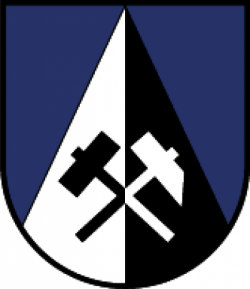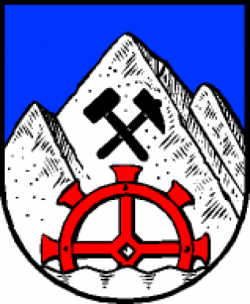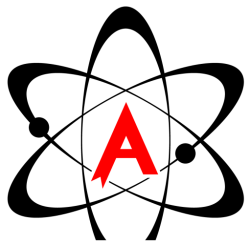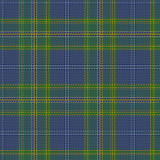What's the meaning of the Coat of arms of Albania »
Coat of arms of Albania
This page is about the meaning, origin and characteristic of the symbol, emblem, seal, sign, logo or flag: Coat of arms of Albania.

The coat of arms of Albania is an adaptation of the flag of Albania. It is based on the seal of Gjergj Kastriot Skanderbeg. The emblem above the head of the two-headed eagle is the helmet of Skanderbeg, surmounted with billy goats' horns.
The emblem has dimensions of 1:1.5. It is sometimes considered to violate the rule of tincture, because in English and French heraldry, sable (black) is considered a colour, whereas elsewhere it is often considered a fur.
Skanderbeg's helmet is made of white metal, adorned with a strip dressed in gold. On its top lies the head of a horned goat made of bronze, also dressed in gold. The bottom part bears a copper strip adorned with a monogram separated by rosettes * IN * PE * RA * TO * RE BT *, which means: Jhezus Nazarenus * Principi Emathie * Regi Albaniae * Terrori Osmanorum * Regi Epirotarum * Benedictat Te (Jesus Nazarene Blesses Thee [Skanderbeg], Prince of Mat, King of Albania, Terror of the Ottomans, King of Epirus). It is thought that the copper strip with the monogram is the work of the descendants of Skanderbeg and was placed there by them, as Skanderbeg never held any other title but “Lord of Albania” (Dominus Albaniae) Thus the inscriptions on the helmet may refer to the unsettled name by which Albania was known at the time, as a means to identify Skanderbeg's leadership over all Albanians across regional denominative identifications. Contemporary sources show that 14th century Albanians were invariably identified as a tribal peoples, with no state of their own. Thus, depending on where they lived – North or South, in the plains or in the mountains, and to which civilization they subscribed to - we have Turkish Arnauts, Greek Arbanites or Albanoi, Albanian Arber, Arben, Arberesh, Epirotas.
According to a report by historian Shefqet Pllana, Sami Frasheri in his Kamus-al-Alam maintains that the wording "Dhu lKarnejn" (owner of the two horns) was an appellative attributed to Alexander the Great of Macedon, the very name which Skanderbeg bore in the Islamic form. This second explanation may not be the truer, since the theory of the Macedonian-Albanian and Epirot-Albanian continuance is strong among Albanians but not among all the peoples of Europe. This opinion agrees with the work of Marin Barleti who writes: "When the people saw all those young and brave men around Skanderbeg, then it was not hard to believe that the armies of [Sultan] Murat were so defeated by the Albanians. Indeed, the times when the star of Macedon shone brilliantly had returned, just as they seemed in those long forgotten times of Pyrrhus and Alexander."
- 1,332 Views
Graphical characteristics:
Asymmetric, Closed shape, Colorful, Contains both straight and curved lines, Has no crossing lines.
Category: Emblems.
Coat of arms of Albania is part of the Coat of Arms group.

More symbols in Coat of Arms:
A coat of arms is a unique heraldic design on an escutcheon (i.e. shield), surcoat, or tabard. The coat of arms on an escutcheon forms the central element of the full heraldic achievement which consi… read more »
More symbols in Emblems:
An emblem is an abstract or representational pictorial image that represents a concept, like a moral truth, or an allegory, or a person, like a king or saint. Although words emblem and symbol are of… read more »
Citation
Use the citation below to add this symbol to your bibliography:
Style:MLAChicagoAPA
"Coat of arms of Albania." Symbols.com. STANDS4 LLC, 2025. Web. 21 Jan. 2025. <https://www.symbols.com/symbol/coat-of-arms-of-albania>.

















Have a discussion about Coat of arms of Albania with the community:
Report Comment
We're doing our best to make sure our content is useful, accurate and safe.
If by any chance you spot an inappropriate comment while navigating through our website please use this form to let us know, and we'll take care of it shortly.
Attachment
You need to be logged in to favorite.
Log In